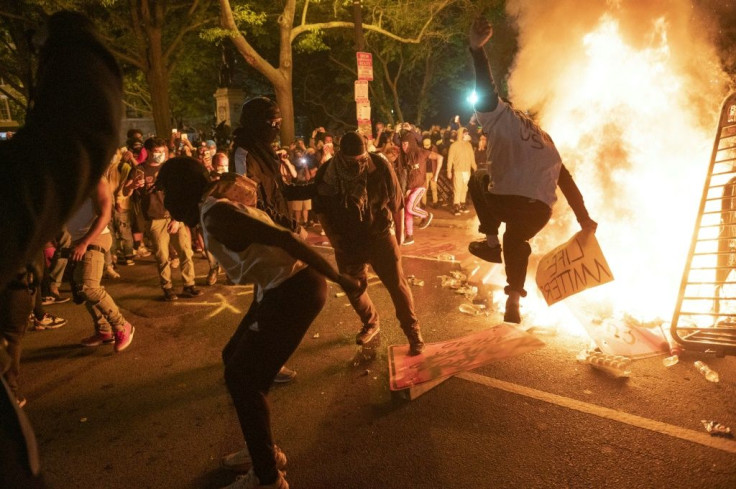What Is The Insurrection Act? As US President, Trump Has Power To Send Military To Calm Unrest

KEY POINTS
- A state's legislature or governor, if the legislature cannot convene, can ask the president to invoke the Insurrection Act
- The act was used to enforce desegregation orders in the 1960s
- Before invoking the act, the president must give protesters time to disperse
President Trump threatened to invoke a 19th century law that allows the president to call in the military to suppress uprisings in individual states at a state’s request. The Insurrection Act has been invoked frequently since it went into effect in 1807, most recently in 1989 in the wake of Hurricane Hugo and during the 1992 Los Angeles riots. It also was used to enforce desegregation orders in the 1960s.
Trump threatened to invoke the act Monday following violent protests that have swept cities across the country, triggered by the Memorial Day death of a black Minneapolis man at the hands of a white police officer. Indictment of the police officer on murder charges failed to quell racial rage over the killing, which involved Officer Derek Chauvin kneeling on the neck of George Floyd as Floyd pleaded for air.
“Mayors and governors must establish an overwhelming law enforcement presence until the violence has been quelled,” Trump said in remarks made in the Rose Garden before police used tear gas and other measures to clear a path for the president to walk across the street for a photo op in front of an Episcopal church where he held up a Bible.
“If a city or a state refuses to take the actions that are necessary to defend the life and property of their residents, then I will deploy the United States military and quickly solve the problem for them.”
Several states already have mobilized the National Guard to back up police trying to keep protesters safe and prevent vandalism and looting.
Calling the violent demonstrations “acts of domestic terror,” Trump said he would mobilize “all available federal resources — civilian and military — to stop the rioting and looting, to end the destruction and arson, and to protect the rights of law-abiding Americans, including your Second Amendment rights.”
The Insurrection Act allows the president to call on the military at the request of a state’s legislature or governor if the legislature cannot be convened, to address circumstances in any state that makes enforcing the law impracticable, and to address insurrection, domestic violence or conspiracy that results in the deprivation of constitutional rights if a state refuses or cannot do so.
To invoke the act, the president must first issue a proclamation giving those targeted time to disperse. If the threat doesn’t work, the president then can issue an executive order sending in troops.
The act reads:
"Be it enacted by the Senate and House of Representatives of the United States of America in Congress assembled, That in all cases of insurrection, or obstruction to the laws, either of the United States, or of any individual state or territory, where it is lawful for the President of the United States to call forth the militia for the purpose of suppressing such insurrection, or of causing the laws to be duly executed, it shall be lawful for him to employ, for the same purposes, such part of the land or naval force of the United States, as shall be judged necessary, having first observed all the pre-requisites of the law in that respect."
© Copyright IBTimes 2025. All rights reserved.






















